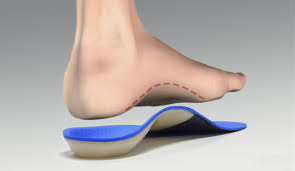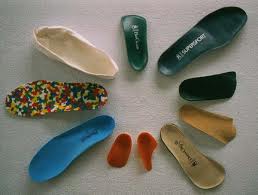Orthotics, do we need them for dancing and how do they help?
The foot.
 The foot is designed to function well on soft natural surfaces like sand and earth. Modern day living however means we spend a lot of time on hard concrete style surfaces and in fashion shoes which restrict the foot’s natural mobility and feedback. As a result the foot loses its natural mobility and responsiveness when reacting with the ground. The foot can ‘weaken’ in these responses and become pain producing. This applies to our dance shoes also as they provide very little foot support as we dance upon a hard surface and can also be quite restrictive. (Ballet and pointe shoes especially)
The foot is designed to function well on soft natural surfaces like sand and earth. Modern day living however means we spend a lot of time on hard concrete style surfaces and in fashion shoes which restrict the foot’s natural mobility and feedback. As a result the foot loses its natural mobility and responsiveness when reacting with the ground. The foot can ‘weaken’ in these responses and become pain producing. This applies to our dance shoes also as they provide very little foot support as we dance upon a hard surface and can also be quite restrictive. (Ballet and pointe shoes especially)
Painful symptoms associated with foot mal-alignment and weakness are not just restricted to the foot itself, but also include low back pain, ‘runners knee’, ‘shin splints’, plantar fasciosis and Achilles tendonopathy to name but a few. The whole body responds to the foot, so we can even see jaw problems and head-aches occurring as a result of a foot that doesn’t load well.
What are orthotics?
Orthotics are a passive devise that insert into the shoe to assist in correct foot position. The foot should load like a spring when we walk, run and jump. If the foot is over pronated or rigid this ‘spring’ loading is less effective and other areas of the body get ‘jarred’ when we move causing tightness or pain.
An orthotic is designed to assist the foot with a more optimal loading pattern as we walk or dance. This in turn can release the tension felt elsewhere in the body and allow the injury to heal naturally.
Diagnosis: Do I need orthotics?
It is always necessary to get a diagnosis for any pain in the foot or lower limb. If the outcome of your assessment shows that the foot is not loading well, part of the treatment plan may be to have orthotics in the shoes.
Diagnosis will include a thorough postural assessment and gait analysis. It is also advantageous to assess the pelvis and the SIJ (sacro iliac joint) for any dysfunction either at the joint itself or more dynamically with muscle control during movement.
It is more common to use orthotics for over/early pronation of the foot. This is seen when the foot rolls in too far or too early. It is very common with hypermobile feet such as that of the dancer. Some people stand with their feet already ‘collapsed’ in. There is no loading left for the foot now, it behaves more like ‘over stretched elastic’.
Ideally the orthotic should be used as an adjunct to performing foot strengthening exercises regularly and learning about correct standing posture and foot placement. We still want to improve arch control and foot mobility from within the body using our own muscles and fascia.
 Orthotics can also provide a period of respite for the dancer who is barefoot or in ballet shoes for most of the day.
Orthotics can also provide a period of respite for the dancer who is barefoot or in ballet shoes for most of the day.
Types of orthotics.
Hard form orthotics: – These orthotics are usually prescribed by your podiatrist and a print of your foot is often taken to get them designed to your individual foot type.
Soft form orthotics: – This is more of a generic orthotic but come in many forms to suit all activities. These orthotics come in different densities to correspond with exercise demand and weight.
There are also several different styles to suit all shoes and activities.
- Full length:- Traditional full length for a school shoe or trainers
- ¾ length:- Suitable for shoes with a narrower front
- Easyfit:- For slim fit shoes like a low court shoe/ kitten heel
- Heel pain insert: – Especially good for heel pain/spurs/faciosis/severs/bursitis. This insert can also fit into a very narrow shoe such as a soccer boot or dance shoe.
- Slimfit:- For fashion shoes and even high heels/chorus shoes
- Heel wedge: – This can be used without an orthotic and is useful for off-loading the calf so will be good for severs or Achilles tendon problems.
- Arch support: – Is as it sounds, a small insert for underneath the arch. It will provide passive support under the long arch of the foot but doesn’t help with rear foot correction.
For the summer time there are even motion control thongs!
Flip flops/ thongs: – there are some great flip flops on the market with arch support which still look very fashionable. Check out these sites :-
BIRKENSTOCK HERE
SCHOLLORTHAHEEL HERE
EQUILIBRAS HERE
Soft form orthotics can be prescribed by your Physiotherapist, which is preferable to buying them off the shelf at the chemist as they can prescribe the optimal one for your needs and mould to your foot if required.
For any further information regarding orthotics or for a full body assessment contact:
Email: perfectformphysio.com.au
Ph: 99227721









